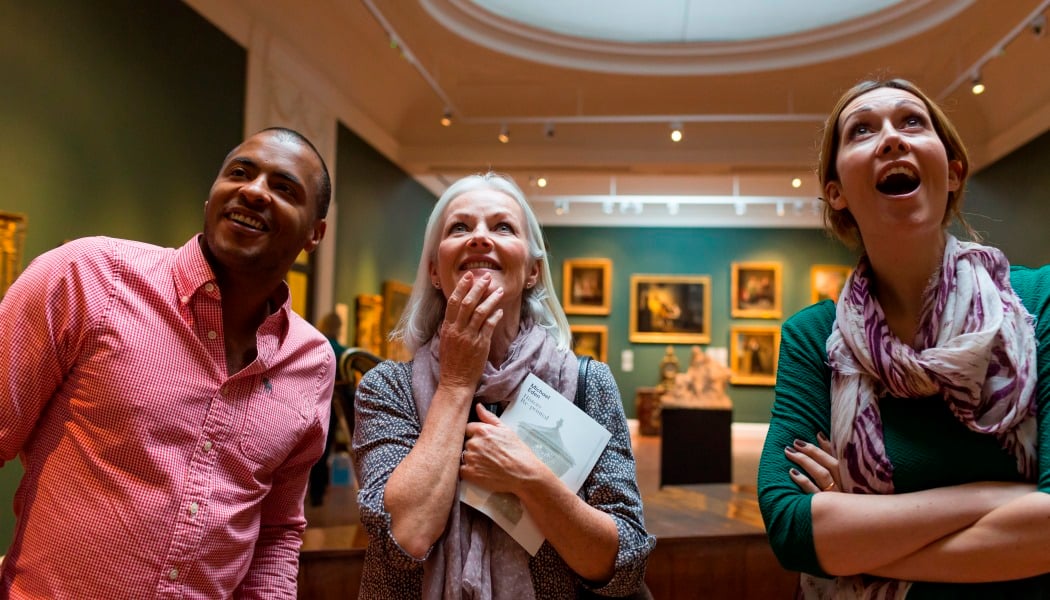Museums and galleries have a unique way of influencing the guest experience in that the engagement between the visitor and the venue affects the quality of a person's experience.
As people, we learn and engage using objects, context, and information – at a museum, we might ask questions, read labels, grab a pamphlet, or listen to a recording as we take in an interesting piece of art or revere an ancient artifact. But at what point do these orientation spaces become too much for the learner to digest? Can a space overwhelm a guest?
If this sounds familiar, you might suffer from what the Amgueddfa Cymru National Museum Wales describes as "feature creep." Feature creep is dangerous because most perpetrators rarely know it is happening until the visitor feedback cards mention it.

For destination venues, when every little thing speaks, nothing speaks.
Orientation spaces suffering from "feature creep" – lobbies, information booths, hallways, and exits – ask too much of guests. It's tempting to address a visitor experience problem with a small, quick change, but it's important to consider the wider impact each seemingly small addition has on the overall experience. (We offer our guests a paper map, but would adding ropes and signage be more effective? The sign to the left lists ticket information, and the sign to the right explains our cellphone policy, but our guests might also want lunch. Let's add a third sign pointing toward the café.)
When viewed together, what does the entire space say to the guest?
Cluttered spaces speak volumes without really saying anything. Instead of providing a person with the information they need, chaotic orientation spaces pull your guests in different directions, which makes engaging with your venue harder.
Guests want practical spaces that send a clear message.
Successful orientation spaces are purposeful, designed with intention and simplicity – this is especially true for your arrival spaces. What if, instead of trying to do too much, we went back to the basics? What if we took a "Marie Kondo" approach to the visitor experience and removed every extraneous element from our venue spaces until we're left with just the practical?
Remember that less is more when crafting the guest experience at your venue. Yes, your guest experience hinges on a knowledgeable staff and ambiance, but it is also defined by sites that are easily navigable, clear, and comfortable.
So, take a walk through your venue in the eyes of a guest and ask yourself: what speaks to me, and is our intended message blatantly clear? If not, how can you improve the existing space before adding more?
If you'd like to learn more about leveraging your orientation spaces to create awesome arrivals and fond farewells, send us a message or book a FREE consultation!
Want to be more EFFECTIVE? Follow us on the journey:
- Follow us on TWITTER: @DonnellyEffect
- Follow us on LINKEDIN: Donnelly Effect & Mike Donnelly
- SPARKS! Blog: Subscribe on the upper right hand side of this page =)
Mike Donnelly is a recognized expert, keynote speaker, facilitator and consultant in customer service and leadership development. Leveraging 20+ years of experience from The Walt Disney Company, he and his team help destination location clients and clients in various customer-facing industries create customer loyalty to achieve positive business results. Learn more at www.DonnellyEffect.com.




